Chicago's summers are stretching out into fall

Chicago's summers are stretching out into fall
Allergy sufferers in Chicago may still be sniffling well into fall. A new study examines the increase in freeze-free fall days here. That means a longer growing season for ragweed.
CHICAGO - It's not your imagination if you hear the words "achoo" and "bless you" later and later into autumn. Climate change is the culprit for more fall sneezing.
Our summer heat seems to have spilled over into fall in Chicago. September ended up more than three degrees above average. It tied two other Septembers as the 14th warmest on record. October is seeing a similar departure from average so far. The month is now running 3 degrees above average.
A Climate Central study confirms our warmest season is encroaching on fall more and more. This is particularly bad news for allergy sufferers.
Nearly 50 million people in the U.S. have allergies to ragweed pollen. Ragweed is the main cause of fall allergies. For most areas that have ragweed pollen, it typically peaks in September and then hangs around through October. The ragweed growing season is growing longer though because of warmer fall temperatures. According to a 2003 study, the urban heat island effect like we see in Chicago, can help ragweed grow even faster and produce more pollen.
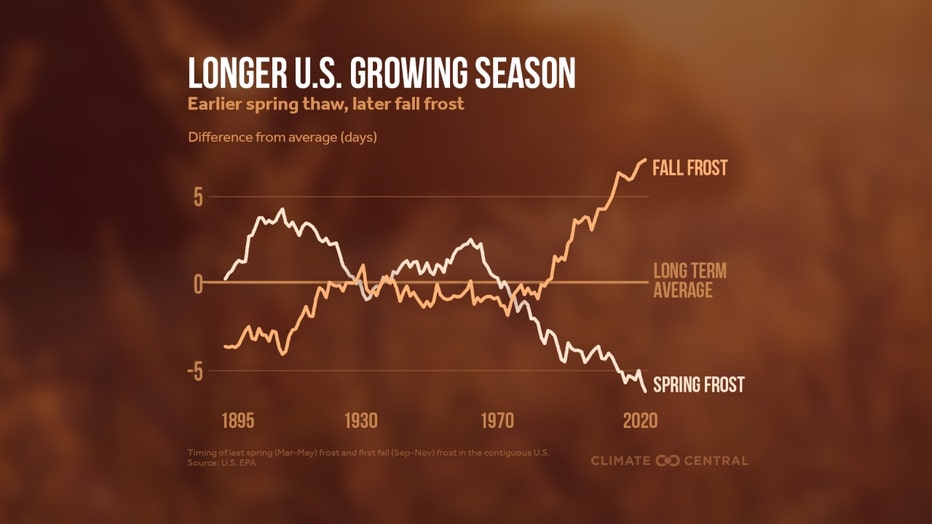
Climate Central's study found that fall warming since 1970 has extended ragweed's freeze-free (with minimum temperatures above 32 degrees) growing season in many US cities.
They examined data from 201 locations and found the freeze-free fall season has lengthened in 164 of them or 82% of the cities they analyzed. The average increase was 11 days. For 53 of the locations, there was an increase of two weeks.
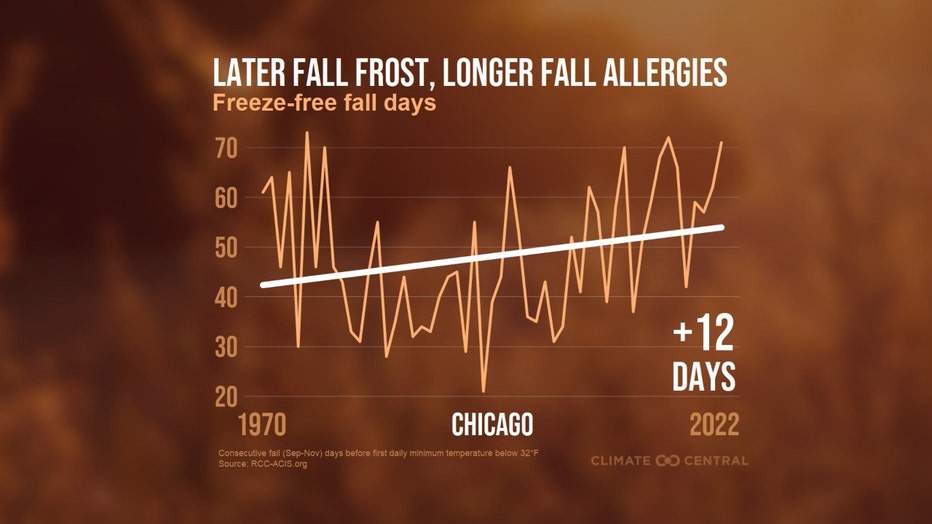
The number of consecutive freeze-free days (with minimum temperatures above 32 degrees during meteorological fall (Sept-Nov) has increased the fastest at higher latitudes.
More than half of the cities where the freeze-free fall season has lengthened by two weeks are found in the Northeast, Upper Midwest, and Northwest. Chicago's freeze-free fall season has increased by 12 days since 1970.

Barry Butler's beautiful shot of fall colors emerging in Chicago.
There are 17 different types of ragweed that grow in our country. Just one ragweed plant can produce up to 1 billion pollens of grain. The changes in our climate mean a prolonged production of allergy-inducing pollen. Both the annual growing season and pollen season in our country are getting longer because of an earlier spring warm-up (when our last spring frost happens) and a fall cool-down (when the first fall frost happens) occurring later in the year at most locations. The University of Michigan produced a video that shows when each pollen season peaks across our country.
The Asthma and Allergy Foundation Of America does an annual ranking of the most challenging places to live with seasonal allergies. Out of the 100 "Allergy Capitals" in their list, Chicago ranks 45th. The three factors they analyzed for their rankings include pollen scores for tree, grass, and weed pollen, the use of over-the-counter allergy medication, and the number of allergy specialists. In the "all pollen" category we were "worse than average". In the "medicine use" category we were "better than average". In the "specialists" category we ranked "average".
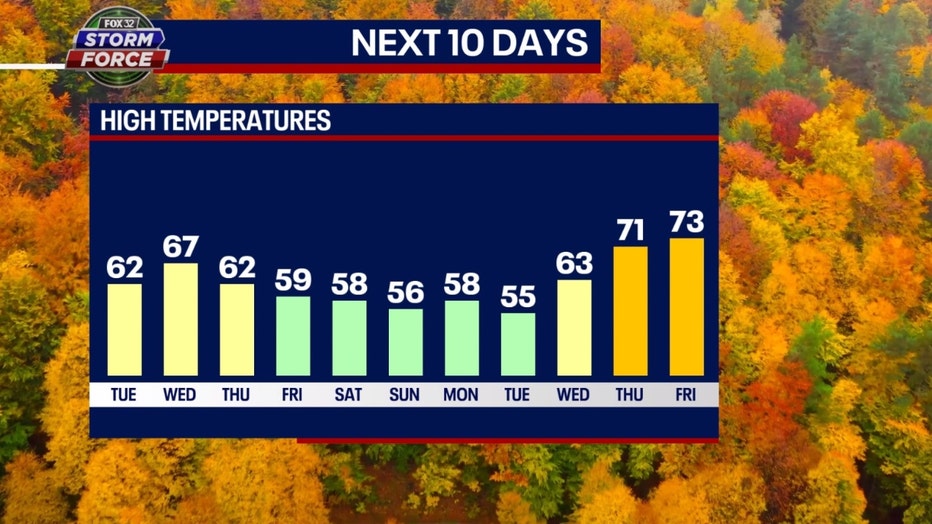
While we have seen a few mornings with patchy frost this fall so far, there has yet to be a widespread hard freeze here. The average date for the first freeze is October 11th through the 20th with northern and northwest suburbs experiencing it earlier in that range and southern suburbs normally later. The first freeze for the city of Chicago itself is somewhere between October 27th and November 5th. Are there any freezing temperatures in our forecast? Our Fox Model extended forecast does have highs falling into the 50s from Friday through Tuesday, but lows should only fall into the 40s for most of us during this period.
The longer-range temperature outlooks from the Climate Prediction Center hint at a mild pattern for just past the middle of the month and season.
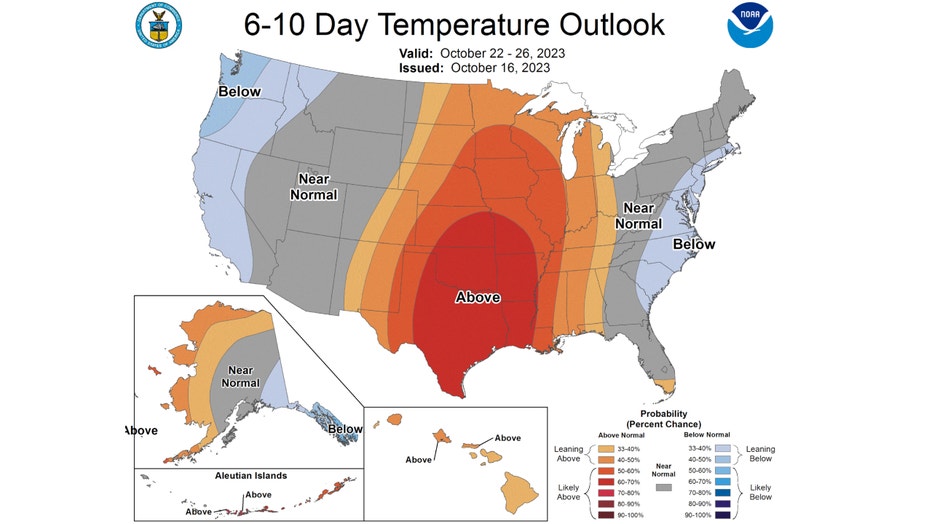
The 6-10 day temperature outlook has most of northern Illinois "likely above" normal overall. This covers the period of Sunday through the following Thursday.
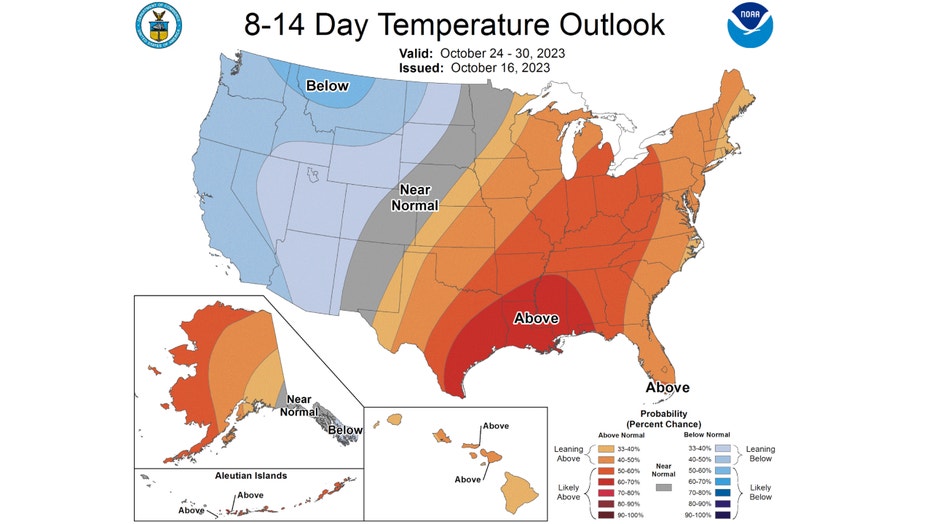
The 8-14 day temperature outlook keeps the mild pattern coming through the end of the month. It has northern Illinois either "leaning above" or "likely above" normal from next Tuesday through the following Monday.
So without any immediate hard freezes in sight, keep the Kleenex handy.

